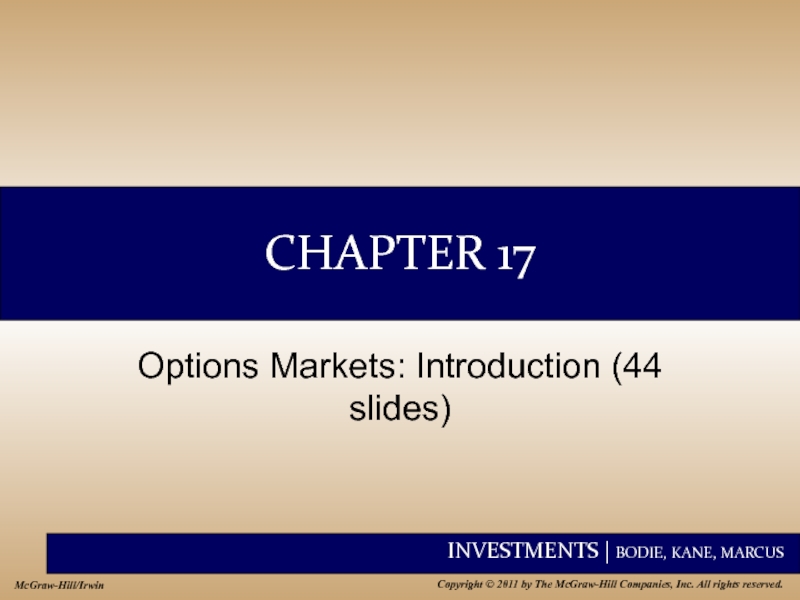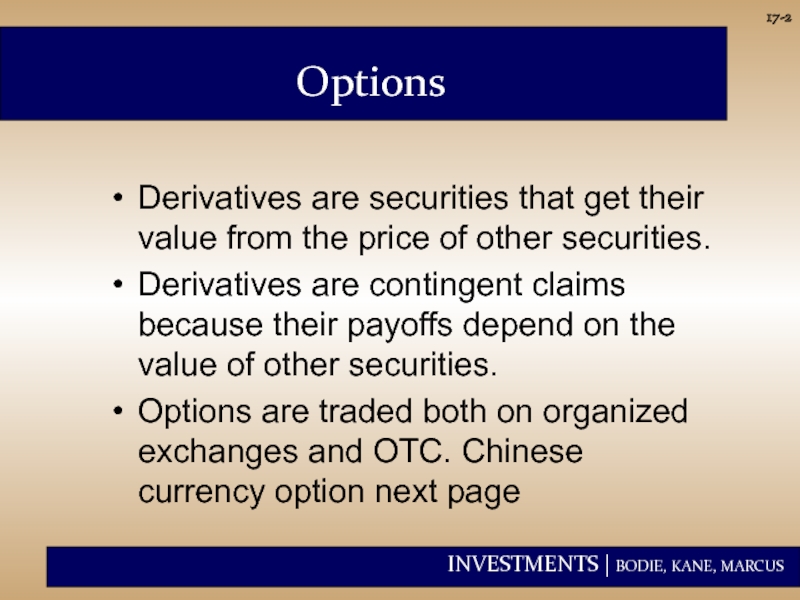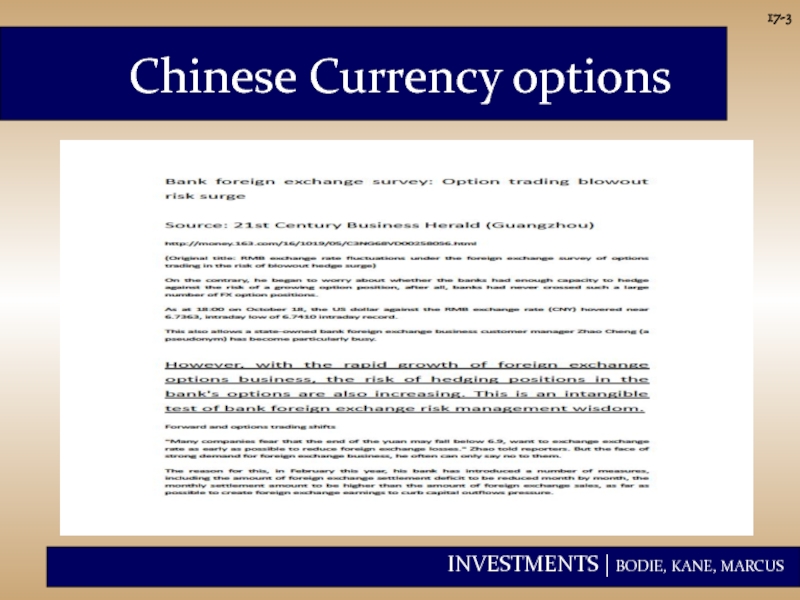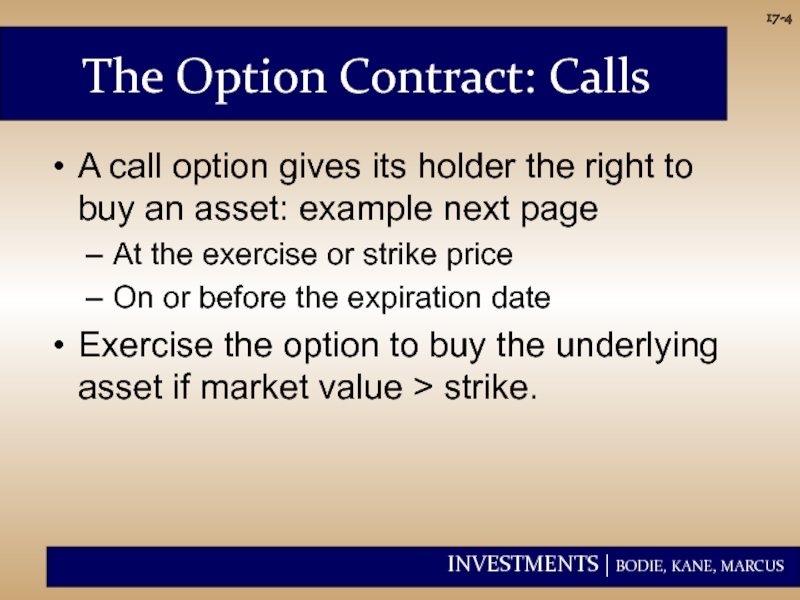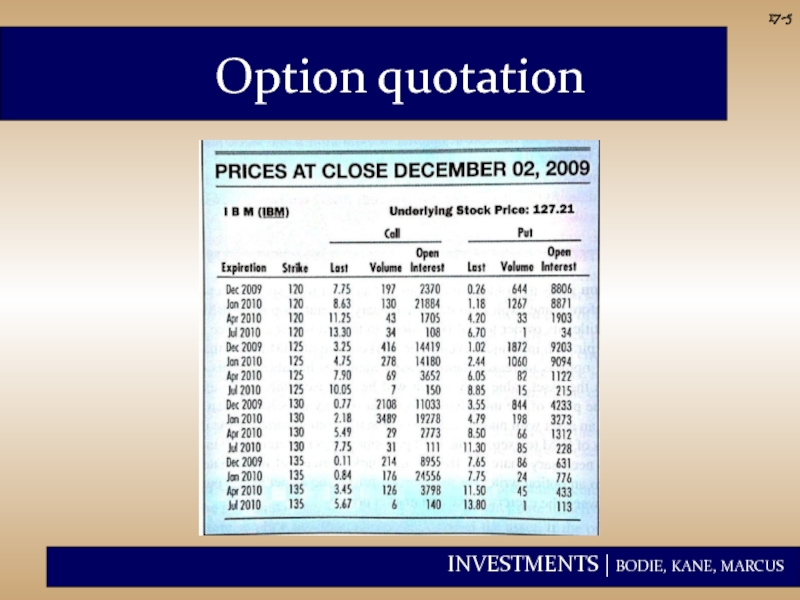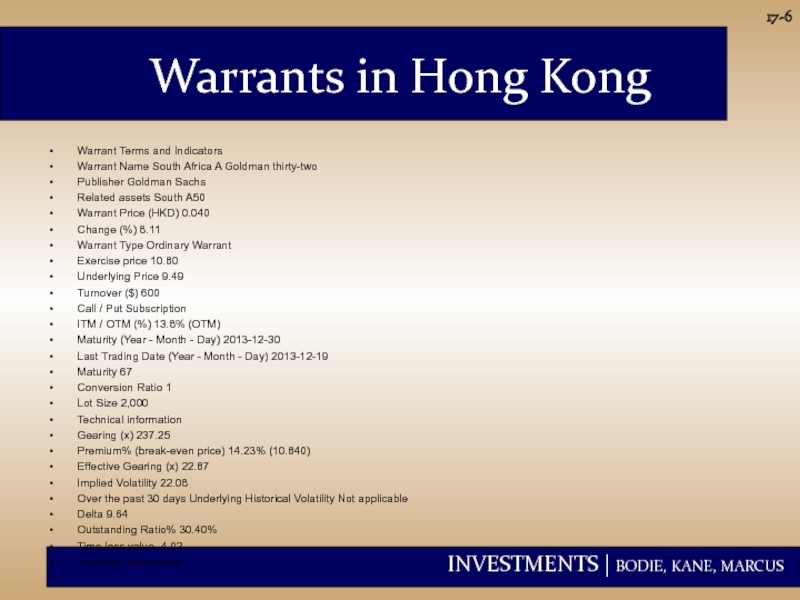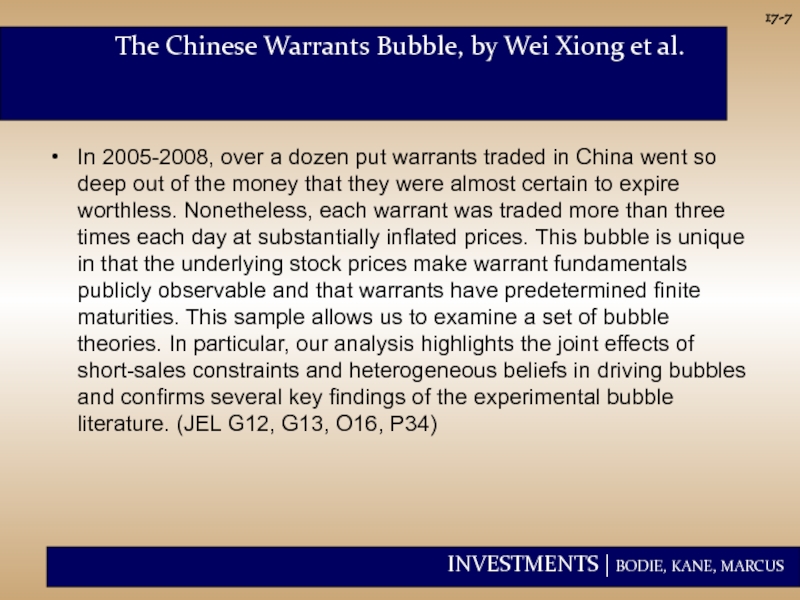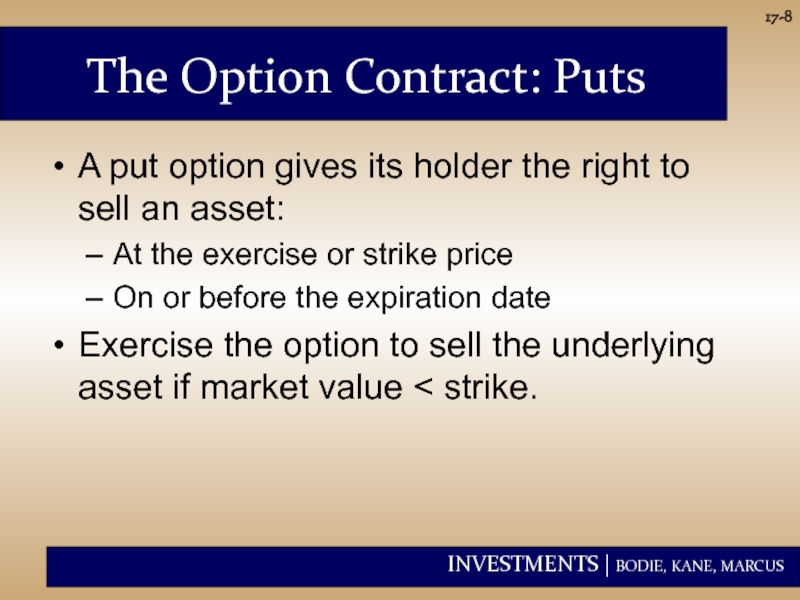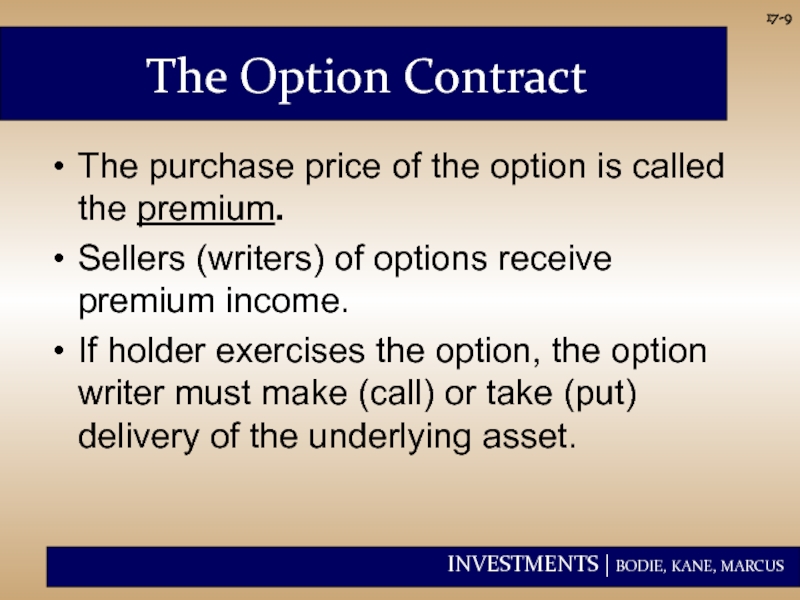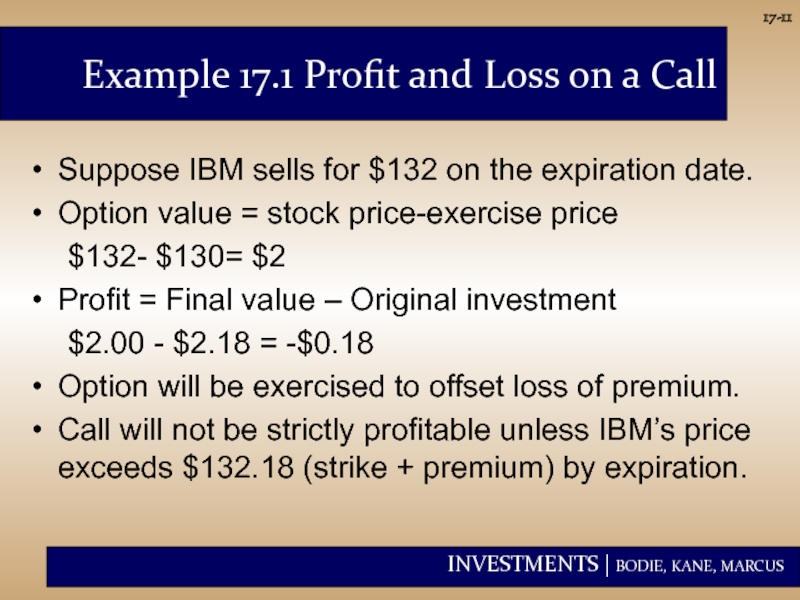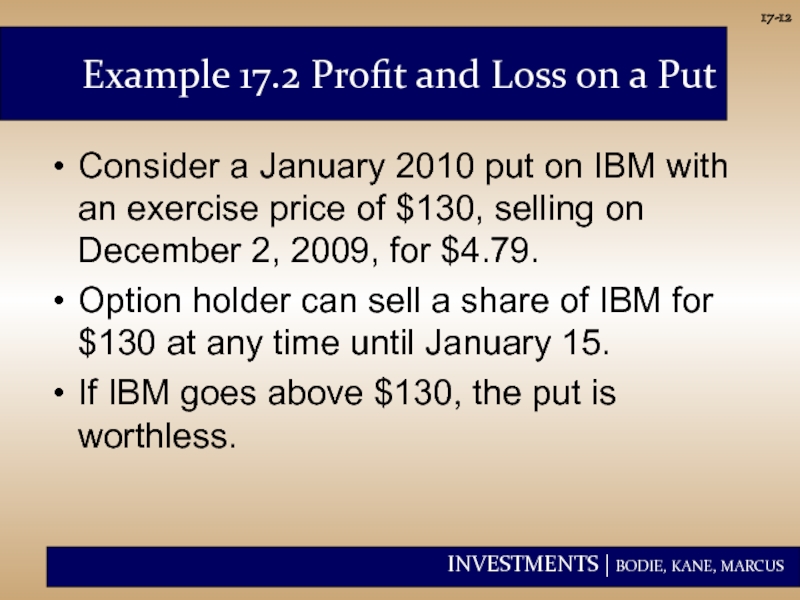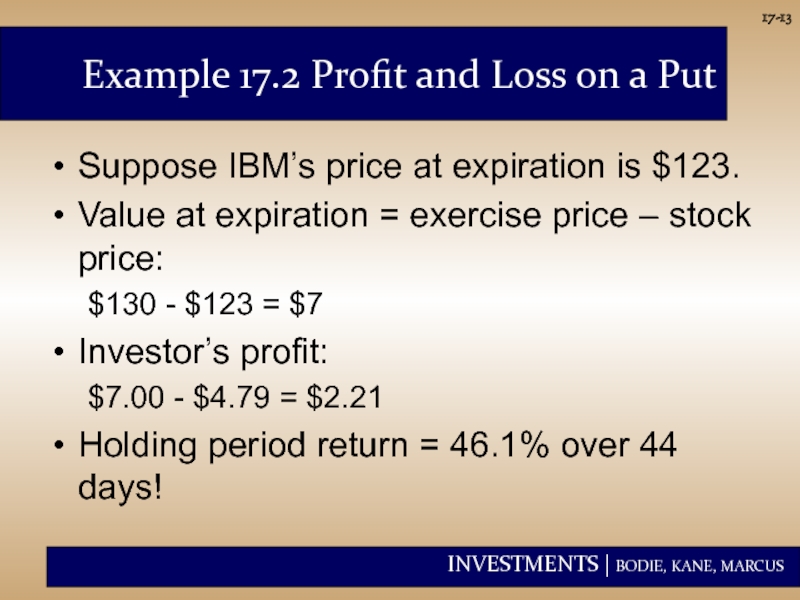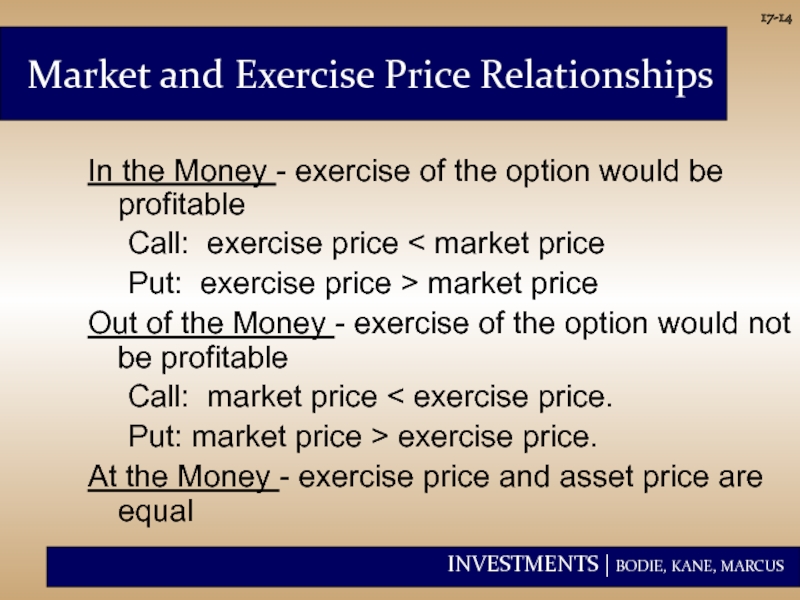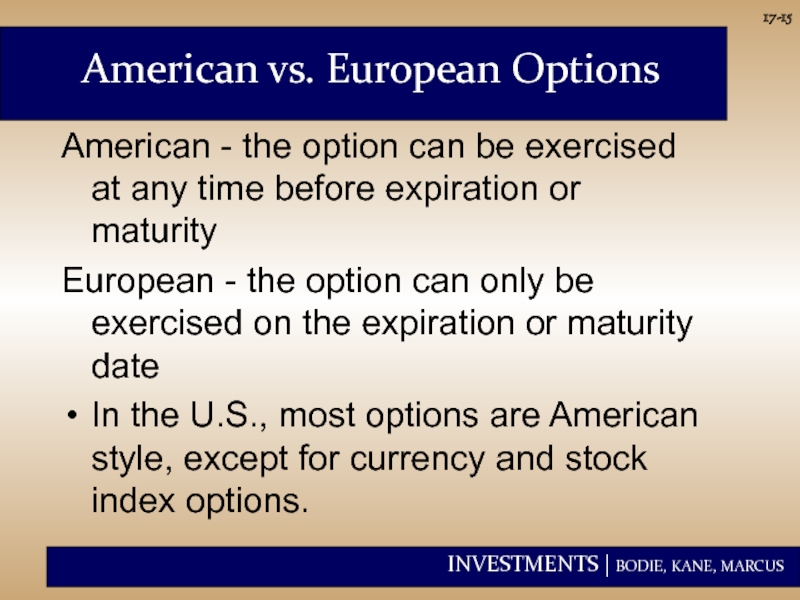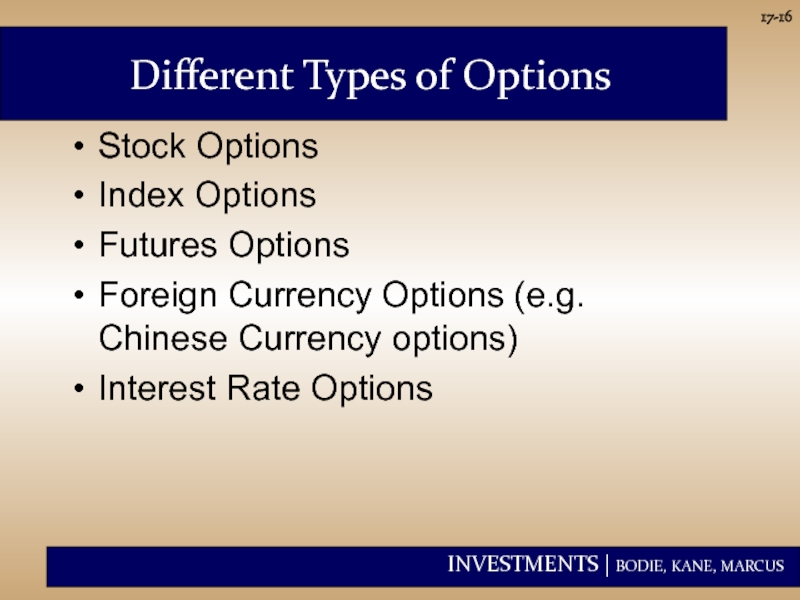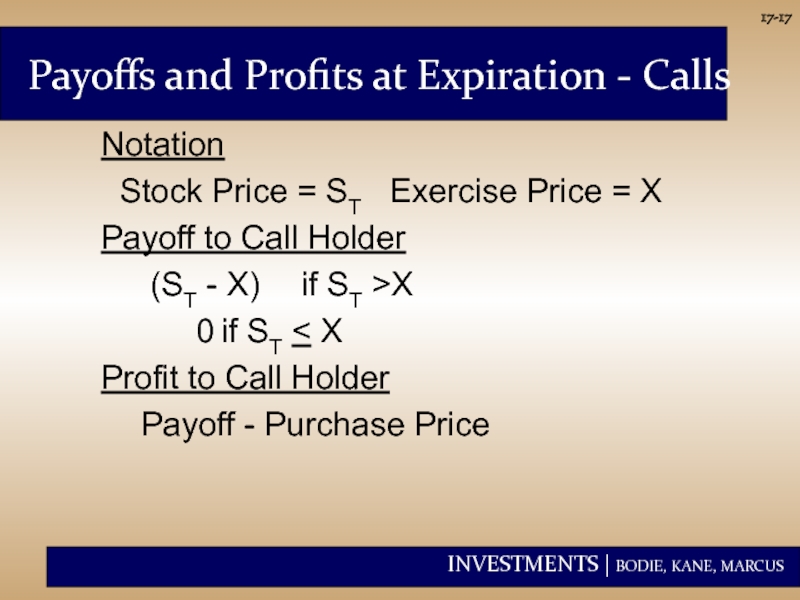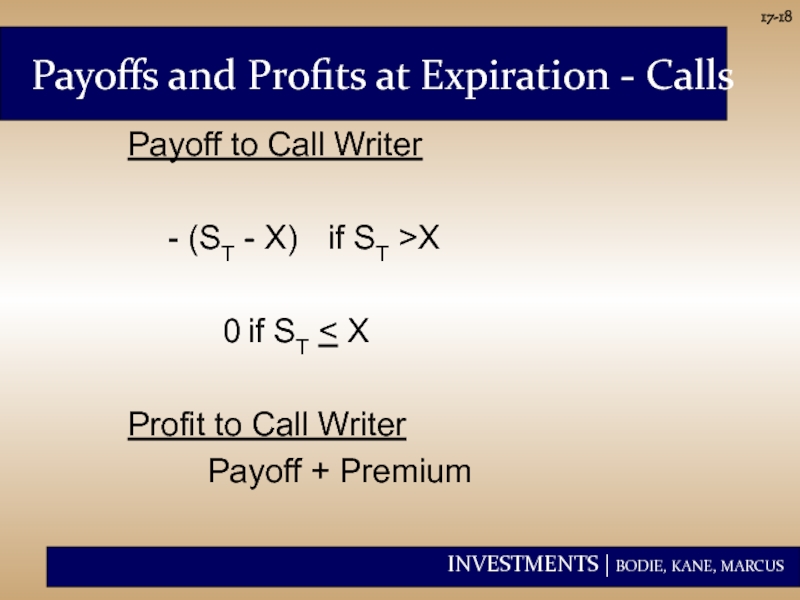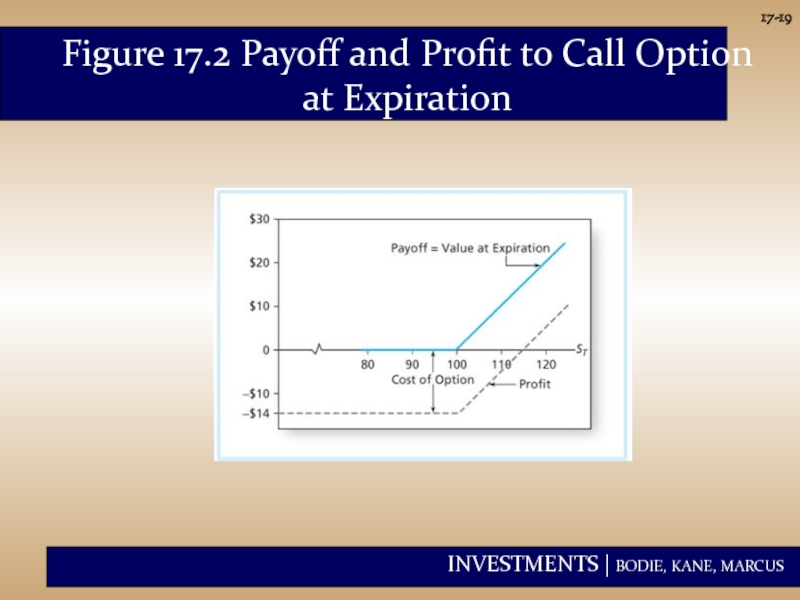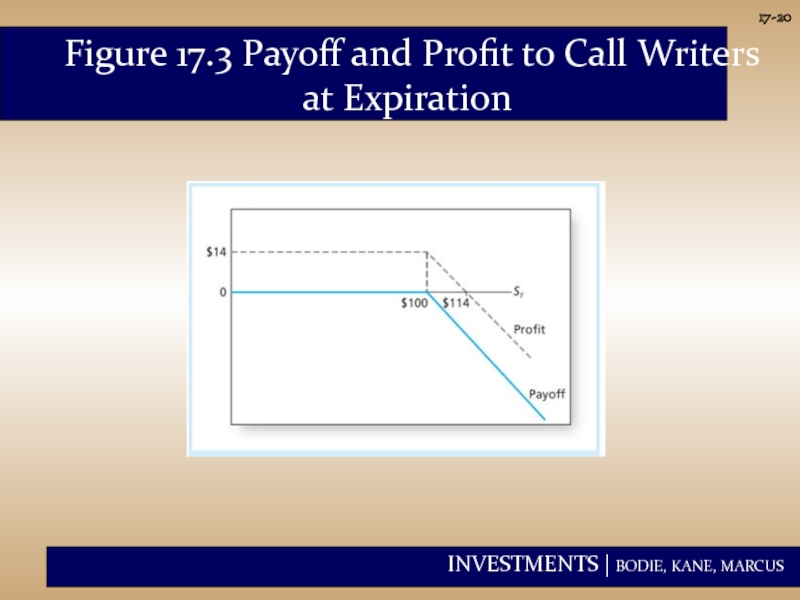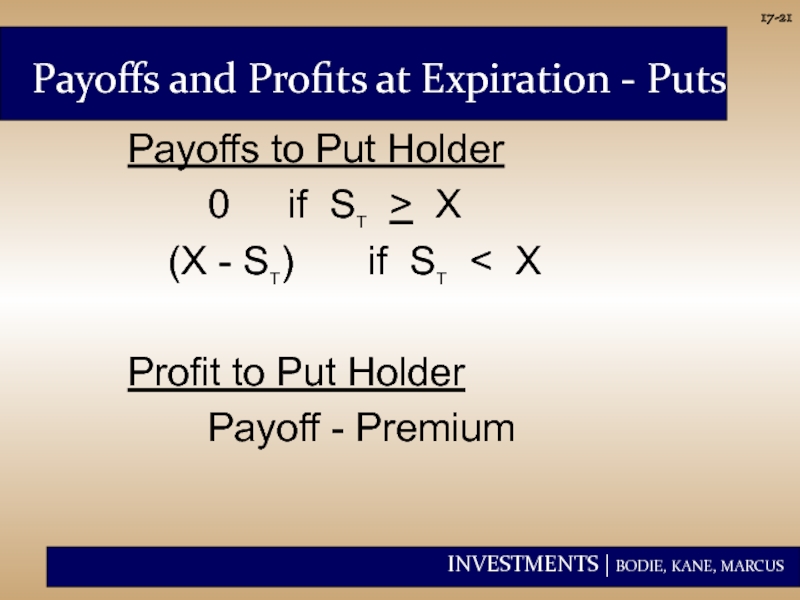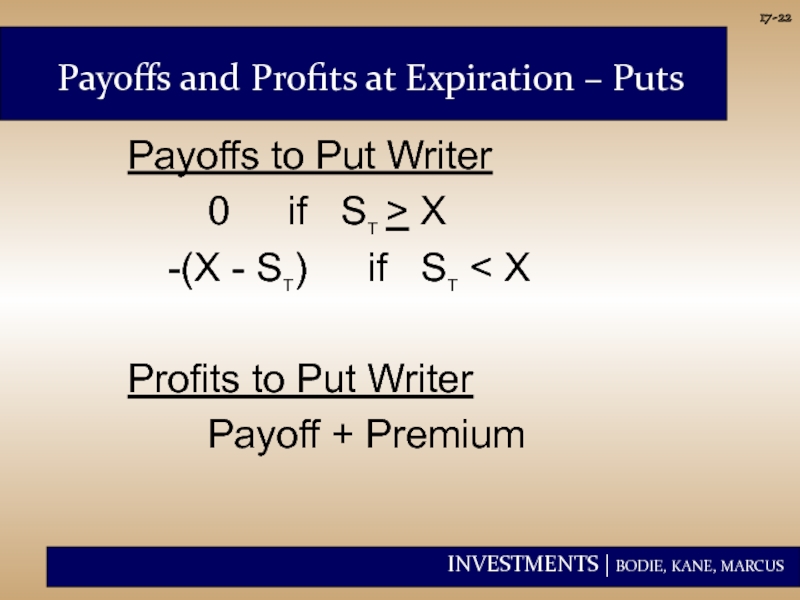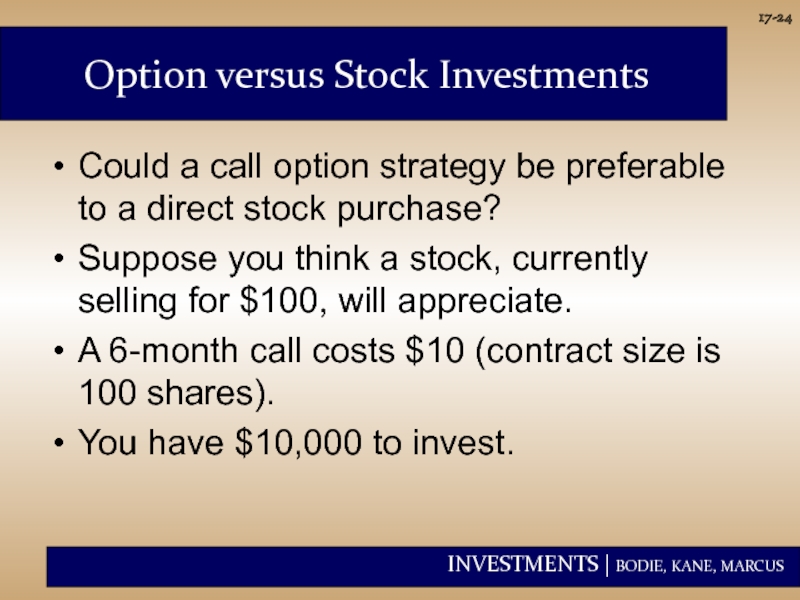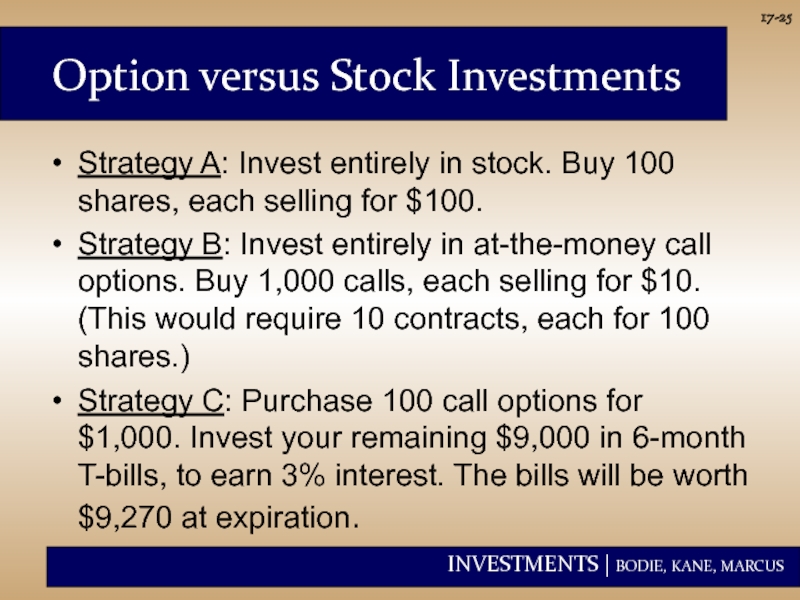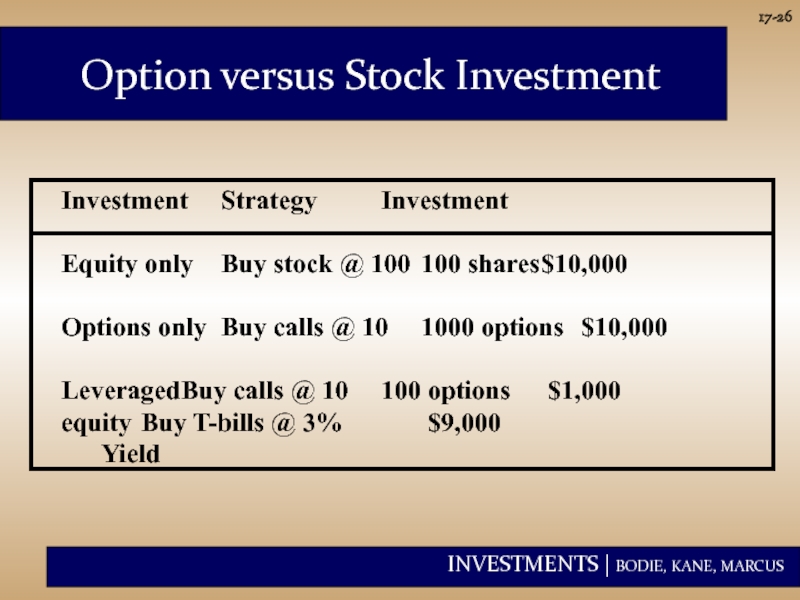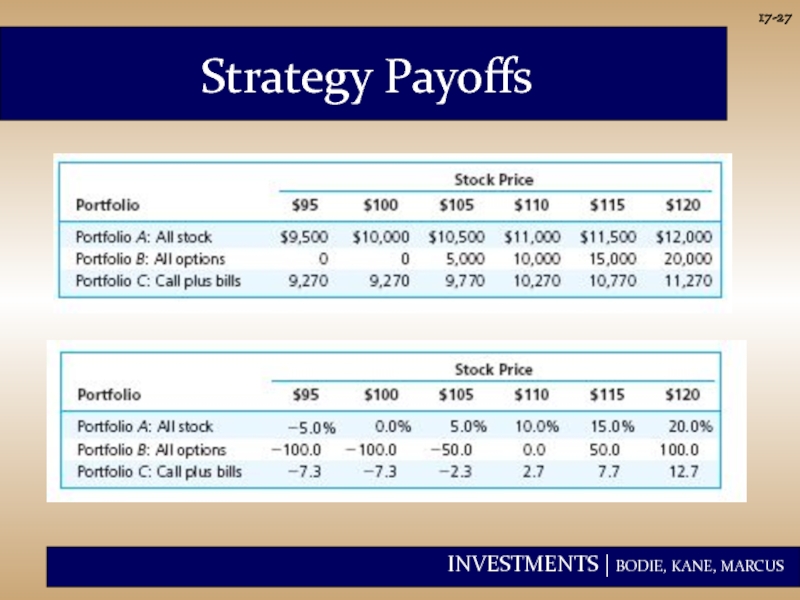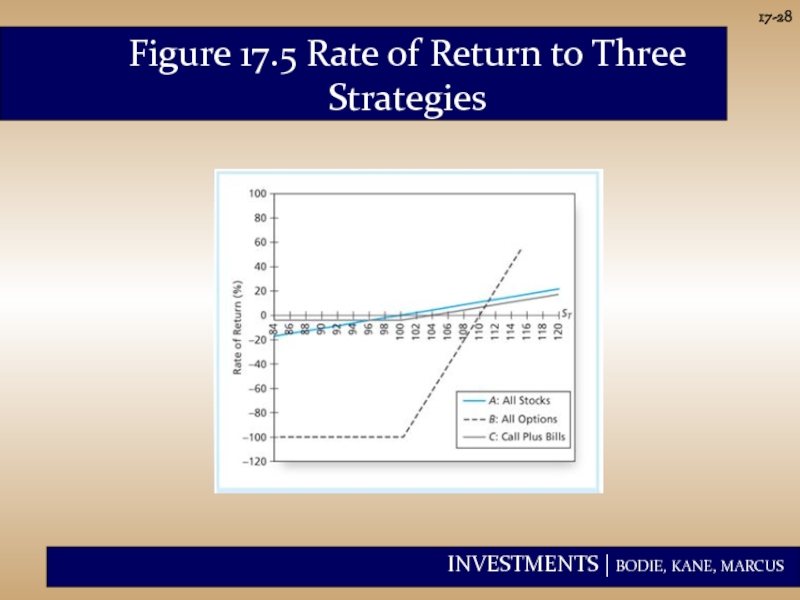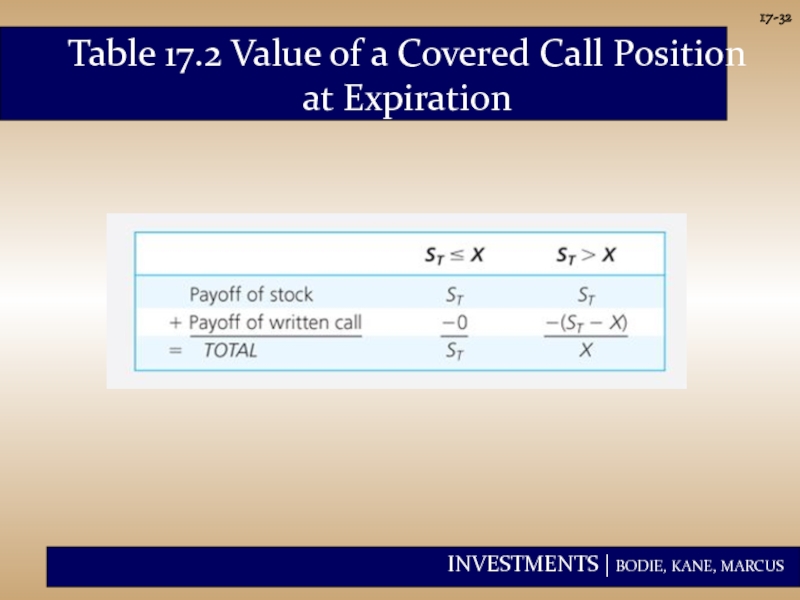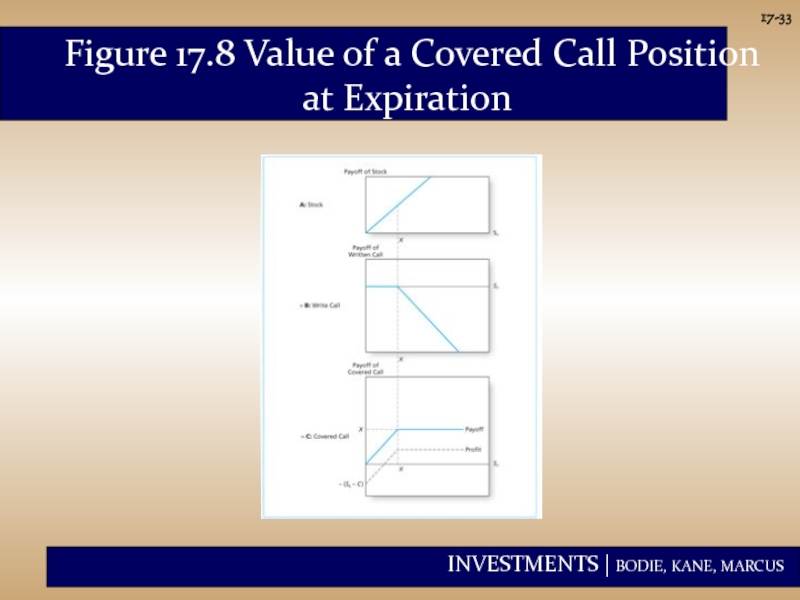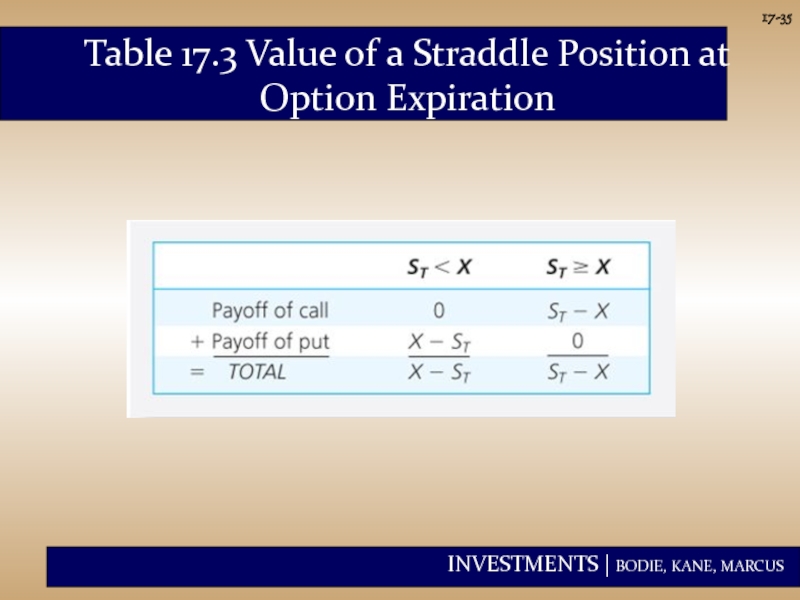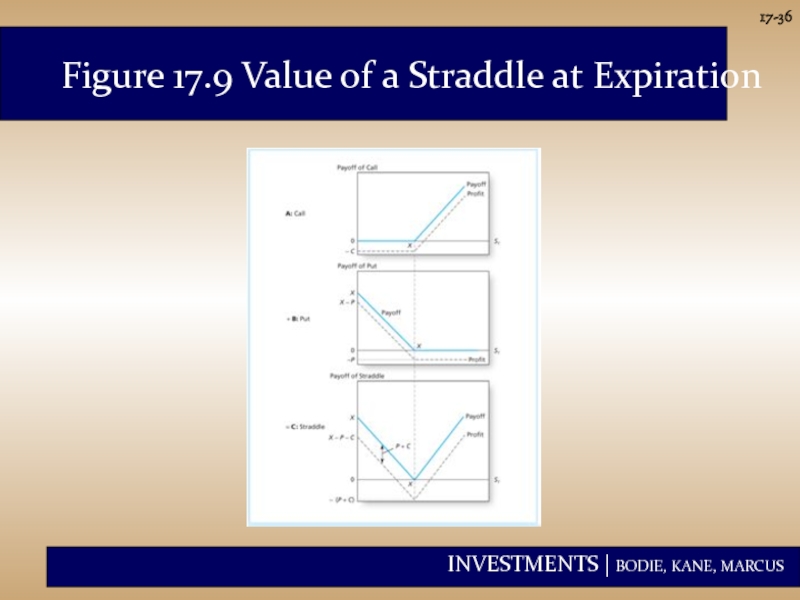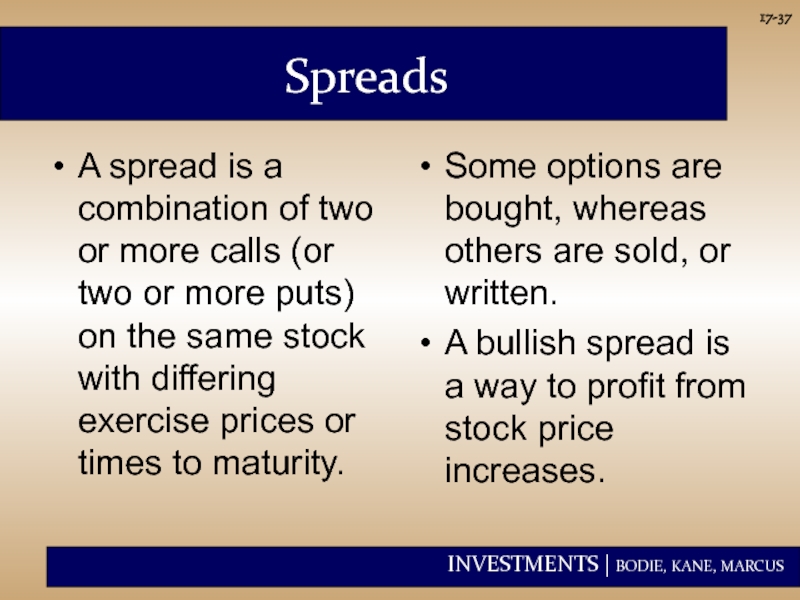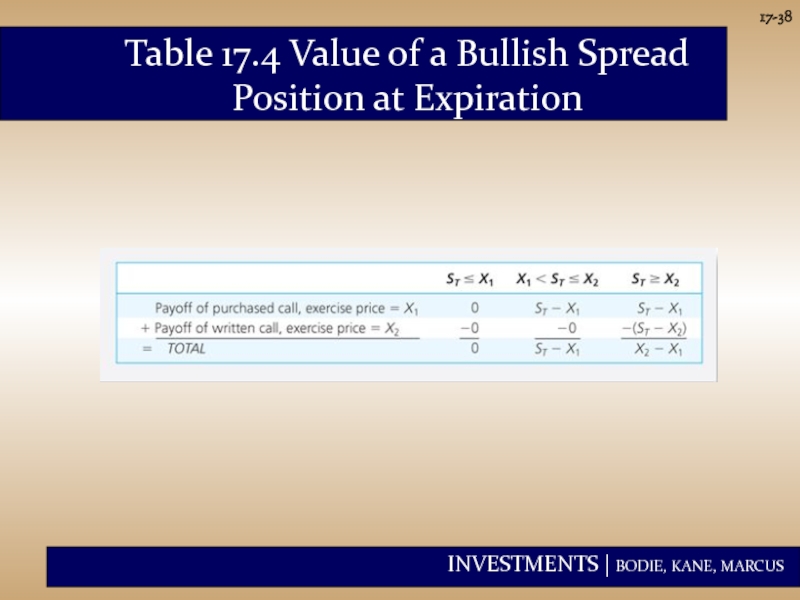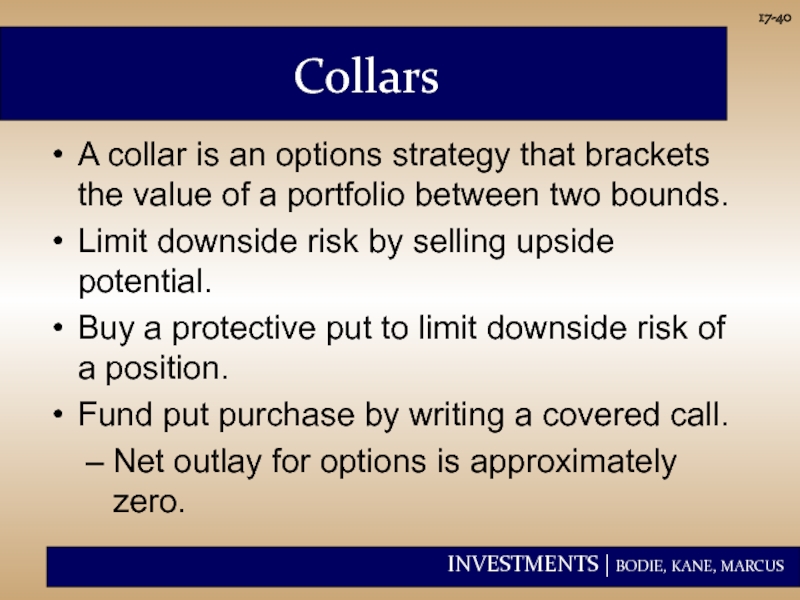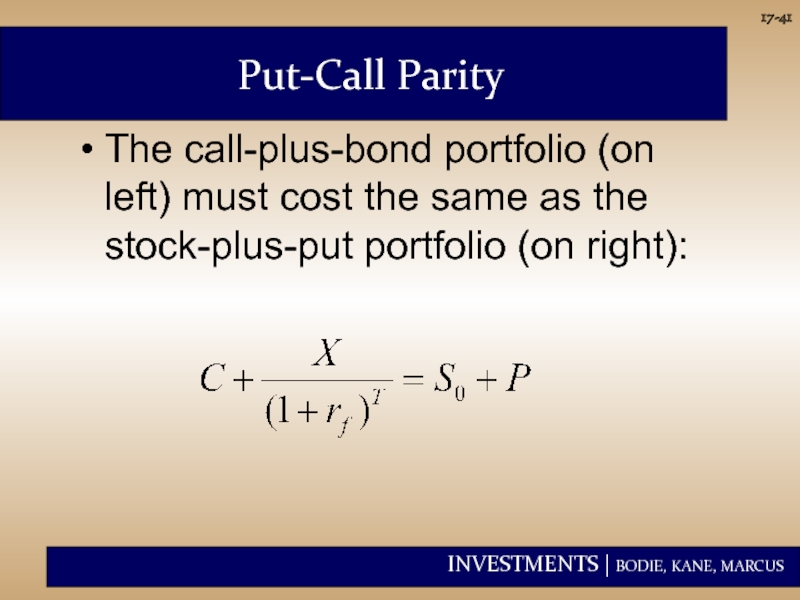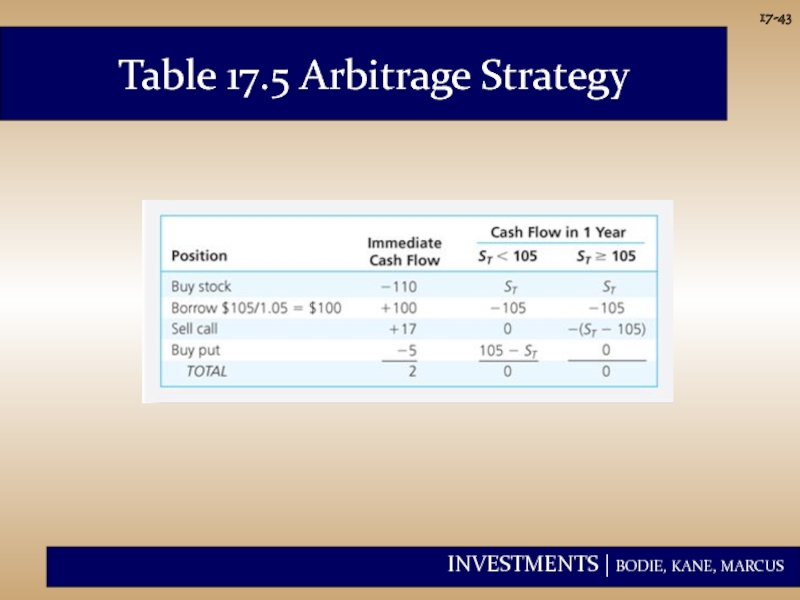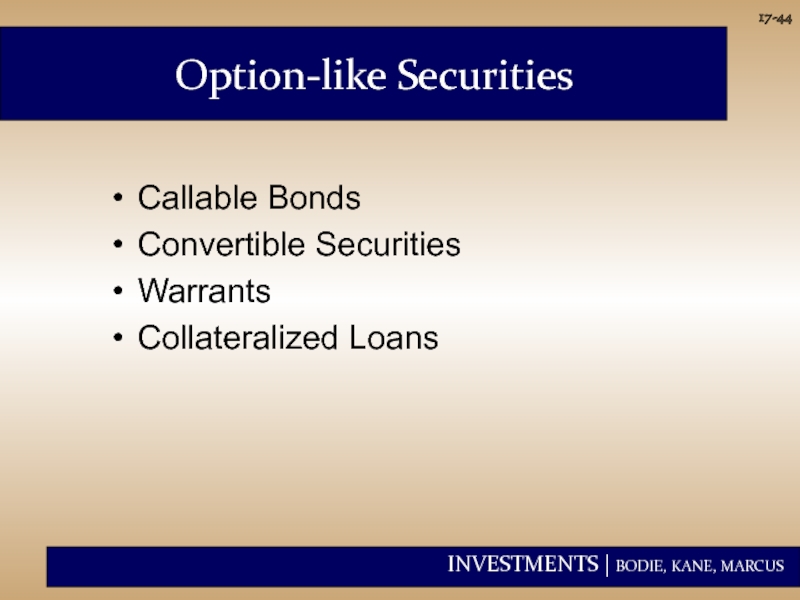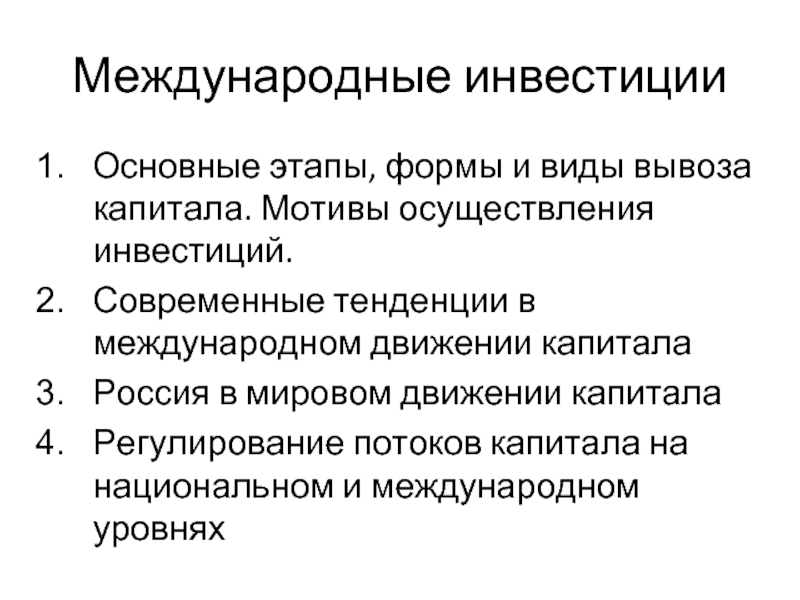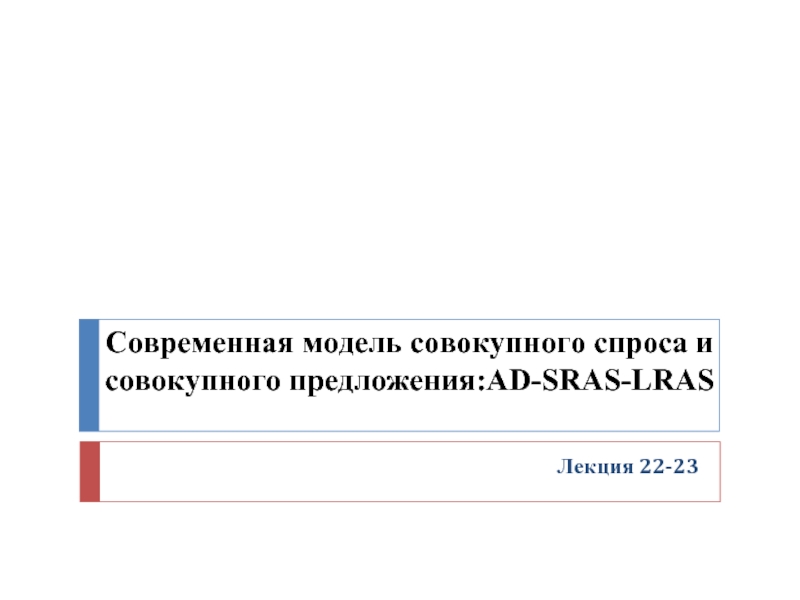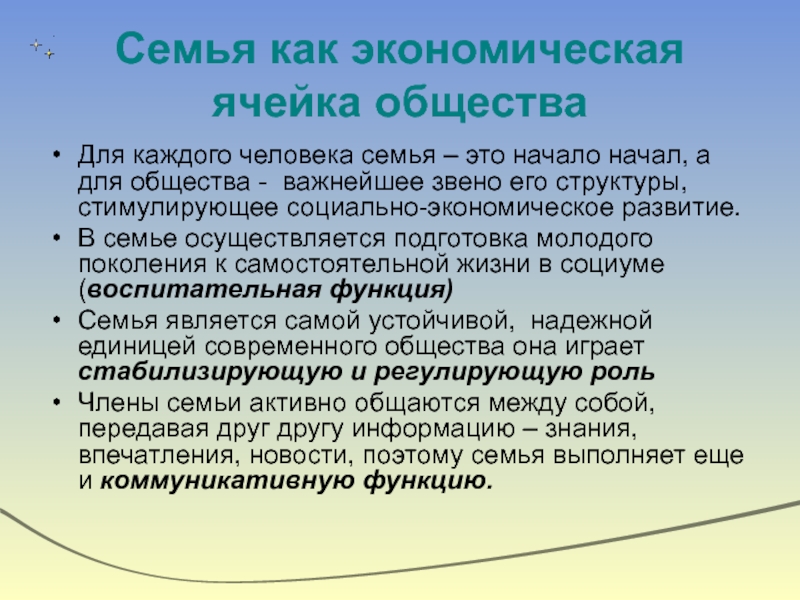- Главная
- Разное
- Дизайн
- Бизнес и предпринимательство
- Аналитика
- Образование
- Развлечения
- Красота и здоровье
- Финансы
- Государство
- Путешествия
- Спорт
- Недвижимость
- Армия
- Графика
- Культурология
- Еда и кулинария
- Лингвистика
- Английский язык
- Астрономия
- Алгебра
- Биология
- География
- Детские презентации
- Информатика
- История
- Литература
- Маркетинг
- Математика
- Медицина
- Менеджмент
- Музыка
- МХК
- Немецкий язык
- ОБЖ
- Обществознание
- Окружающий мир
- Педагогика
- Русский язык
- Технология
- Физика
- Философия
- Химия
- Шаблоны, картинки для презентаций
- Экология
- Экономика
- Юриспруденция
Chapter 17. Options markets: introduction презентация
Содержание
- 1. Chapter 17. Options markets: introduction
- 2. 17- Derivatives are securities that get their
- 3. Chinese Currency options 17-
- 4. 17- The Option Contract: Calls A call
- 5. Option quotation 17-
- 6. Warrants in Hong Kong Warrant Terms and
- 7. The Chinese Warrants Bubble, by Wei Xiong
- 8. 17- The Option Contract: Puts A put
- 9. 17- The Option Contract The purchase price
- 10. 17- Example 17.1 Profit and Loss on
- 11. 17- Example 17.1 Profit and Loss on
- 12. 17- Example 17.2 Profit and Loss on
- 13. 17- Example 17.2 Profit and Loss on
- 14. 17- In the Money - exercise of
- 15. 17- American - the option can be
- 16. 17- Stock Options Index Options Futures Options
- 17. 17- Notation Stock Price = ST
- 18. 17- Payoff to Call Writer
- 19. 17- Figure 17.2 Payoff and Profit to Call Option at Expiration
- 20. 17- Figure 17.3 Payoff and Profit to Call Writers at Expiration
- 21. 17- Payoffs to Put Holder 0 if ST
- 22. 17- Payoffs to Put Writer 0 if
- 23. 17- Figure 17.4 Payoff and Profit to Put Option at Expiration
- 24. 17- Option versus Stock Investments Could a
- 25. 17- Option versus Stock Investments Strategy A:
- 26. 17- Investment Strategy Investment Equity only Buy stock @
- 27. 17- Strategy Payoffs
- 28. 17- Figure 17.5 Rate of Return to Three Strategies
- 29. 17- Strategy Conclusions Figure 17.5 shows that
- 30. 17- Protective Put Conclusions Puts can be
- 31. 17- Covered Calls Purchase stock and write
- 32. 17- Table 17.2 Value of a Covered Call Position at Expiration
- 33. 17- Figure 17.8 Value of a Covered Call Position at Expiration
- 34. 17- Straddle Long straddle: Buy call and
- 35. 17- Table 17.3 Value of a Straddle Position at Option Expiration
- 36. 17- Figure 17.9 Value of a Straddle at Expiration
- 37. 17- Spreads A spread is a combination
- 38. 17- Table 17.4 Value of a Bullish Spread Position at Expiration
- 39. 17- Figure 17.10 Value of a Bullish Spread Position at Expiration
- 40. 17- Collars A collar is an options
- 41. 17- The call-plus-bond portfolio (on left) must
- 42. 17- Stock Price = 110 Call
- 43. 17- Table 17.5 Arbitrage Strategy
- 44. 17- Option-like Securities Callable Bonds Convertible Securities Warrants Collateralized Loans
Слайд 217-
Derivatives are securities that get their value from the price of
Derivatives are contingent claims because their payoffs depend on the value of other securities.
Options are traded both on organized exchanges and OTC. Chinese currency option next page
Options
Слайд 417-
The Option Contract: Calls
A call option gives its holder the right
At the exercise or strike price
On or before the expiration date
Exercise the option to buy the underlying asset if market value > strike.
Слайд 6Warrants in Hong Kong
Warrant Terms and Indicators
Warrant Name South Africa A
Publisher Goldman Sachs
Related assets South A50
Warrant Price (HKD) 0.040
Change (%) 8.11
Warrant Type Ordinary Warrant
Exercise price 10.80
Underlying Price 9.49
Turnover ($) 600
Call / Put Subscription
ITM / OTM (%) 13.8% (OTM)
Maturity (Year - Month - Day) 2013-12-30
Last Trading Date (Year - Month - Day) 2013-12-19
Maturity 67
Conversion Ratio 1
Lot Size 2,000
Technical information
Gearing (x) 237.25
Premium% (break-even price) 14.23% (10.840)
Effective Gearing (x) 22.87
Implied Volatility 22.08
Over the past 30 days Underlying Historical Volatility Not applicable
Delta 9.64
Outstanding Ratio% 30.40%
Time loss value -4.02
Technical information
17-
Слайд 7The Chinese Warrants Bubble, by Wei Xiong et al.
In 2005-2008, over
17-
Слайд 817-
The Option Contract: Puts
A put option gives its holder the right
At the exercise or strike price
On or before the expiration date
Exercise the option to sell the underlying asset if market value < strike.
Слайд 917-
The Option Contract
The purchase price of the option is called the
Sellers (writers) of options receive premium income.
If holder exercises the option, the option writer must make (call) or take (put) delivery of the underlying asset.
Слайд 1017-
Example 17.1 Profit and Loss on a Call
A January 2010 call
The option expires on the third Friday of the month, or January 15, 2010.
If IBM remains below $130, the call will expire worthless.
Слайд 1117-
Example 17.1 Profit and Loss on a Call
Suppose IBM sells for
Option value = stock price-exercise price
$132- $130= $2
Profit = Final value – Original investment
$2.00 - $2.18 = -$0.18
Option will be exercised to offset loss of premium.
Call will not be strictly profitable unless IBM’s price exceeds $132.18 (strike + premium) by expiration.
Слайд 1217-
Example 17.2 Profit and Loss on a Put
Consider a January 2010
Option holder can sell a share of IBM for $130 at any time until January 15.
If IBM goes above $130, the put is worthless.
Слайд 1317-
Example 17.2 Profit and Loss on a Put
Suppose IBM’s price at
Value at expiration = exercise price – stock price:
$130 - $123 = $7
Investor’s profit:
$7.00 - $4.79 = $2.21
Holding period return = 46.1% over 44 days!
Слайд 1417-
In the Money - exercise of the option would be profitable
Call:
Put: exercise price > market price
Out of the Money - exercise of the option would not be profitable
Call: market price < exercise price.
Put: market price > exercise price.
At the Money - exercise price and asset price are equal
Market and Exercise Price Relationships
Слайд 1517-
American - the option can be exercised at any time before
European - the option can only be exercised on the expiration or maturity date
In the U.S., most options are American style, except for currency and stock index options.
American vs. European Options
Слайд 1617-
Stock Options
Index Options
Futures Options
Foreign Currency Options (e.g. Chinese Currency options)
Interest Rate
Different Types of Options
Слайд 1717-
Notation
Stock Price = ST Exercise Price = X
Payoff to
(ST - X) if ST >X
0 if ST < X
Profit to Call Holder
Payoff - Purchase Price
Payoffs and Profits at Expiration - Calls
Слайд 1817-
Payoff to Call Writer
- (ST - X) if ST >X
Profit to Call Writer
Payoff + Premium
Payoffs and Profits at Expiration - Calls
Слайд 2117-
Payoffs to Put Holder
0 if ST > X
(X - ST) if ST
Profit to Put Holder
Payoff - Premium
Payoffs and Profits at Expiration - Puts
Слайд 2217-
Payoffs to Put Writer
0 if ST > X
-(X - ST) if
Profits to Put Writer
Payoff + Premium
Payoffs and Profits at Expiration – Puts
Слайд 2417-
Option versus Stock Investments
Could a call option strategy be preferable to
Suppose you think a stock, currently selling for $100, will appreciate.
A 6-month call costs $10 (contract size is 100 shares).
You have $10,000 to invest.
Слайд 2517-
Option versus Stock Investments
Strategy A: Invest entirely in stock. Buy 100
Strategy B: Invest entirely in at-the-money call options. Buy 1,000 calls, each selling for $10. (This would require 10 contracts, each for 100 shares.)
Strategy C: Purchase 100 call options for $1,000. Invest your remaining $9,000 in 6-month T-bills, to earn 3% interest. The bills will be worth $9,270 at expiration.
Слайд 2617-
Investment Strategy Investment
Equity only Buy stock @ 100 100 shares $10,000
Options only Buy calls @ 10 1000 options $10,000
Leveraged Buy
equity Buy T-bills @ 3% $9,000
Yield
Option versus Stock Investment
Слайд 2917-
Strategy Conclusions
Figure 17.5 shows that the all-option portfolio, B, responds more
Portfolio C, T-bills plus calls, shows the insurance value of options.
C ‘s T-bill position cannot be worth less than $9270.
Some return potential is sacrificed to limit downside risk.
Слайд 3017-
Protective Put Conclusions
Puts can be used as insurance against stock price
Protective puts lock in a minimum portfolio value.
The cost of the insurance is the put premium.
Options can be used for risk management, not just for speculation.
Слайд 3117-
Covered Calls
Purchase stock and write calls against it.
Call writer gives up
If you planned to sell the stock when the price rises above X anyway, the call imposes “sell discipline.”
Слайд 3417-
Straddle
Long straddle: Buy call and put with same exercise price and
The straddle is a bet on volatility.
To make a profit, the change in stock price must exceed the cost of both options.
You need a strong change in stock price in either direction.
The writer of a straddle is betting the stock price will not change much.
Слайд 3717-
Spreads
A spread is a combination of two or more calls (or
Some options are bought, whereas others are sold, or written.
A bullish spread is a way to profit from stock price increases.
Слайд 4017-
Collars
A collar is an options strategy that brackets the value of
Limit downside risk by selling upside potential.
Buy a protective put to limit downside risk of a position.
Fund put purchase by writing a covered call.
Net outlay for options is approximately zero.
Слайд 4117-
The call-plus-bond portfolio (on left) must cost the same as the
Put-Call Parity
Слайд 4217-
Stock Price = 110 Call Price = 17
Put Price =
Maturity = 1 yr X = 105
117 > 115
Since the leveraged equity is less expensive, acquire the low cost alternative and sell the high cost alternative
Put Call Parity - Disequilibrium Example
